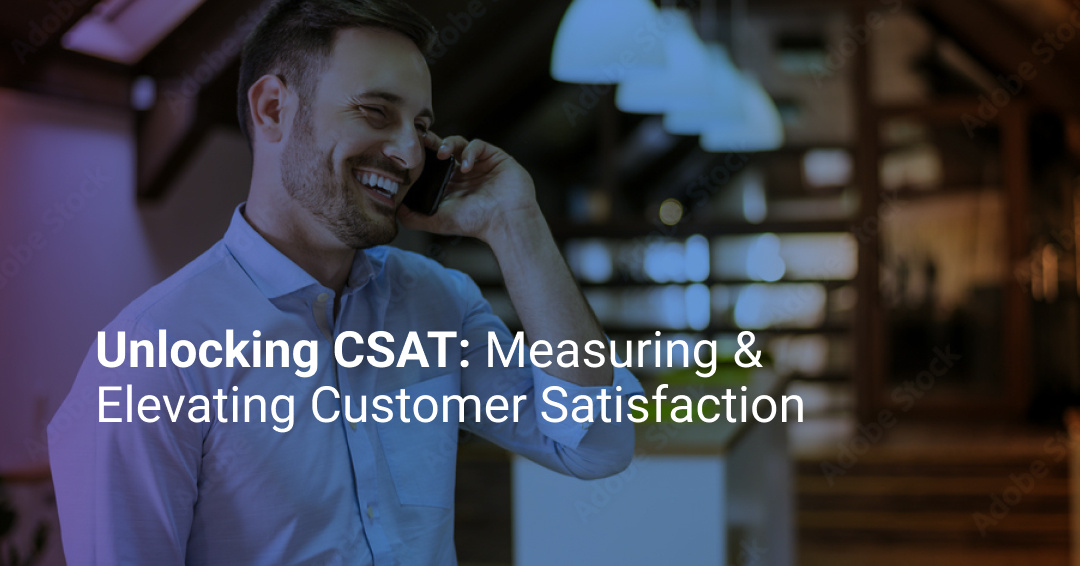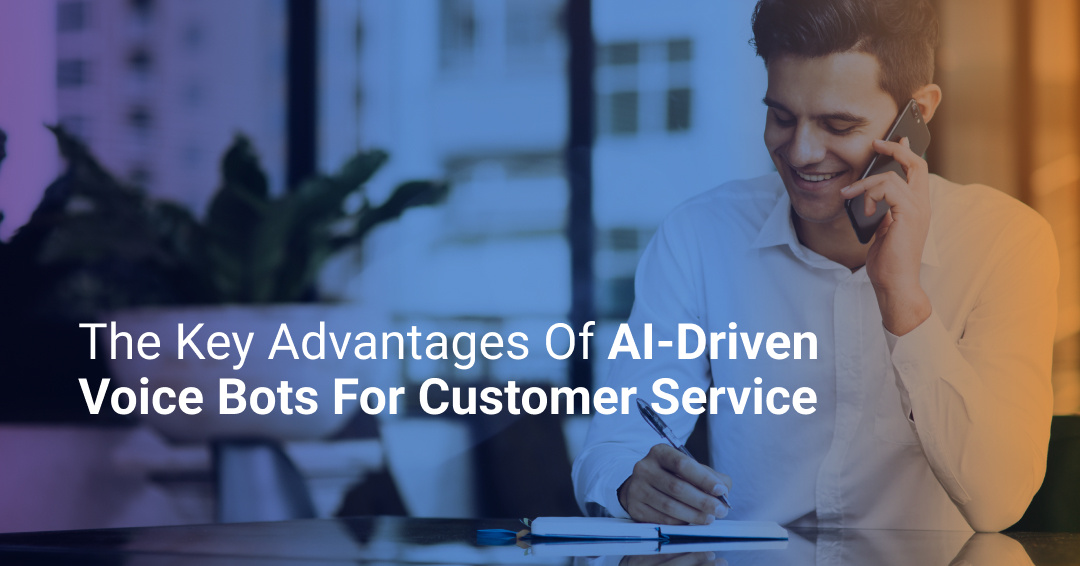What's CSAT Score? How to Measure and Improve It
Businesses across industries have changed or evolved over the decades, but one thing that has remained the same is that their growth is pretty much...
6 min read
![]() Mosaicx
:
September 24, 2024
Mosaicx
:
September 24, 2024

Expectations for individual patient care have increased. Patients want to feel seen and heard by their providers. They also want to trust that those providers work in unison based on their individual needs and ongoing care. These changes have forced healthcare contact centers to reevaluate the tools they use to interact with patients to improve experiences.
Modernization can look different for organizations, but virtual agents for healthcare are at the forefront of this evolution. Healthcare virtual agents meet patient preferences, support healthcare contact center agents, and lower costs for organizations.
Healthcare contact centers handle both inbound and outbound calls for providers. These call centers are often a patient's first point of contact with their healthcare provider. They offer the first opportunity to learn a person's medical history and provide individual patient care.
The effects of the pandemic drastically impacted hospitals and healthcare workers, including healthcare contact center agents. In response to this crisis, the healthcare industry has increased the use of telehealth and other digital healthcare call center solutions to provide care.
In tandem with these events, "healthcare systems face a growing demand for services, rising costs, and a workforce that is struggling to meet patient needs." AI tools that automate tasks are leading solutions to healthcare call center challenges because of the benefits they provide to operations.
AI tools, particularly healthcare virtual agents, have the "potential to transform how healthcare is delivered" by alleviating the current stressors healthcare contact centers face. Some of these stressors include staffing challenges, high call volumes, and more.
In a broader context, these tools are called intelligent virtual agents (IVA). An IVA is an AI-enabled communication tool that generates personalized responses to users. IVAs use intelligent tools to understand human nuance and continuously gather information during interactions. This capability is beneficial in healthcare settings where callers have unique health concerns and call center agents strive to provide quality individual patient care.
Research by McKinsey & Company, quoted above, shows that AI directly impacts the patient. Therefore, healthcare virtual agents should be top of mind when evaluating healthcare call center solutions mainly because of the following benefits.
Patients can receive better care without adding operational overhead through increased access to personalized care via self-service options. With conversational AI implementations via virtual agents, patients can handle simple matters on their own or be redirected to live agents who can support more complex health needs or questions.
Improved operations by helping human agents field calls. This results in cost savings related to IT resources and staffing. It also enables the healthcare contact center to support more patients faster and allows live agents to do their best work.
Strengthened innovation through healthcare contact center automation and intelligent tools allows organizations to track and report data about the patient to their internal teams. As a result, manual and repetitive work is significantly reduced, and automation is automated to empower everyone to focus on more important matters.
By incorporating AI, the healthcare industry can standardize multiple practices and patient interactions. Instead of having inconsistent patterns, AI technologies simplify processes by automating information flows and user interactions, leading to more efficient systems and reduced workloads.
Patient care management can be difficult to run at scale efficiently. AI helps reduce costs by automating the most frequent patient scenarios, leading them to helpful interactions while only transferring complex cases to a live agent. Healthcare organizations can save money by augmenting their live agents' abilities with AI while also providing better care for patients.
An additional benefit of integrating AI to help with patient care is the possibility of providing service anytime. Given the fluidity of our work-life balance, the rise of remote work, and alternative lifestyles, this can have a great impact on your patients by allowing them to access healthcare solutions that match their needs.
Today, the stakes are high for a healthcare contact center to provide personalized care for every patient. Approaching how to improve patient care can be daunting when hospitals and contact centers are short-staffed. However, healthcare providers must plan for and anticipate the future needs of patients to be long-term partners in their care.
Before implementing a virtual agent to improve healthcare, it is important to understand your patients and identify their needs. This includes their health needs, communication preferences, and even technology aptitude. These elements are just a cursory glance of what is required to design an effective healthcare virtual agent for your patients. Mosaicx helps organizations create detailed plans to ensure the virtual agent will best support operations and individual patient care.
Download Now: Enhancing Patient Support Healthcare Playbook [Get Your Copy]
IVAs have various use cases, so it is wise to determine the high return on investment areas. The Mosaicx team can lead this process and identify roadblocks that could hinder ROI. For example, one roadblock to providing personalized care is having the right resources to meet patients' expectations. If the healthcare contact center faces staffing challenges, the organization would want to design and deploy the healthcare virtual agent to automate tasks for callers and truly supplement its existing employees. This could include leveraging the virtual agent to offer self-service options, 24/7 nurse call lines, and personalized healthcare contact center automation.
A few self-service use cases for healthcare contact centers include scheduling and confirming appointments, managing prescription refills, providing clinic directions, and facilitating bill payment. Patients can navigate and resolve these needs in just a few clicks or spoken words. However, if the situation ever evolves in complexity, the healthcare virtual agent will route the caller to a live agent to ensure the best care.
For the virtual agent to truly improve patient care, the healthcare contact center needs to understand the use cases the tool will support and then set rules for the technology. These rules might include when to direct calls to a live agent based on specific keywords or phrases or when to send communications to patients based on past interactions and experiences. The organization and provider can update the rules as patients' needs evolve.
Contact centers in the healthcare industry must consider several standards when integrating AI. Below are some of the most common best practices to consider before moving forward with a provider or developing your own AI solution.
A common misconception is that AI replaces human agents. However, this could not be further from the truth. A great customer experience with conversational AI requires supervision and constant feedback from a human agent that helps the AI learn and improve constantly. At the same time, call volume is massively reduced given that a large number of interactions can be automatically handled by the AI. As a result, live agents focus on more complex problems rather than repeating a script multiple times per day.
Another best practice when implementing AI in any healthcare organization is to ensure that omnichannel capabilities are present. Patients should be able to start a conversation with your organization in one channel and finish it in another without having to explain themselves from scratch.
While this seems like a complex process, with AI, it is automated and updated in real time to provide the best service possible to each patient, no matter where they communicate.
AI technologies require permanent training and updated documentation to work appropriately. A common mistake when integrating AI is forgetting this particular aspect, leading to inaccurate service that can damage your reputation and affect patient care. Be sure to have a dedicated team to handle these updates or work with an enterprise-focused provider that can help you permanently train the AI.
Given the automated nature of AI, data privacy and compliance management becomes a streamlined process. Instead of having to follow a myriad of processes and procedures and train multiple employees to follow them, AI solutions can automate most of the data management, allowing your workforce to supervise its operations and focus on higher-leverage tasks.
As we mentioned, patient care is not replaced but augmented by AI. As a result, the possibility to talk to a live agent should be available during working hours for any patient. However, given that many of the interactions can be handled by conversational AI, patients can access faster solutions to most of their problems, saving time and the cognitive load of having to interact with a live agent.
Understanding what to measure when implementing AI is another key practice for healthcare providers integrating this technology. While it could be easy to use the same metrics you used before integration, understanding that there are indicators that are not as intuitive that you should consider is vital. For example, measuring average wait time would not work with conversational AI solutions, given that the wait time doesn’t exist. First contact resolution, on the other hand, can be used to measure how accurate and helpful the program is by solving problems automatically.
While human agents are responsible for helping AI become a valuable solution for patients, patients are a vital part of the equation that should be taken into account. Luckily, with conversational AI, this process can be automated based on behavioral signals and even proactive outreach with surveys. The more information you can find and actively analyze to improve the conversational AI solution, the better it will be at helping your workforce and patients.
Healthcare contact centers can rest easy knowing that healthcare virtual agents relieve agents of significant burdens and contribute to cost savings. IVAs offer a future-proof solution to the stressors healthcare contact centers face today and could confront down the road.
Mosaicx expands healthcare contact center automation capabilities and makes quality individual patient care a cost-effective reality. Mosaicx simplifies implementation and design to create a unique experience for the organization and, most importantly, the patient.
Every organization in the healthcare sector might approach its modernization efforts differently. However, armed with a greater understanding of patients' needs and available technology, healthcare contact centers can use healthcare virtual agents to improve individual patient care.
Part of patient care is creating a positive patient experience, and poor communication is one of the most noted factors in when someone has a poor experience. Fortunately, virtual agents can overcome healthcare communication challenges as well.

Businesses across industries have changed or evolved over the decades, but one thing that has remained the same is that their growth is pretty much...

Customers have several major expectations from modern businesses, but none is as challenging as them reading your mind to anticipate support you...

The classical understanding of customer service is being significantly changed as more and more businesses shift toward artificial intelligence (AI)...